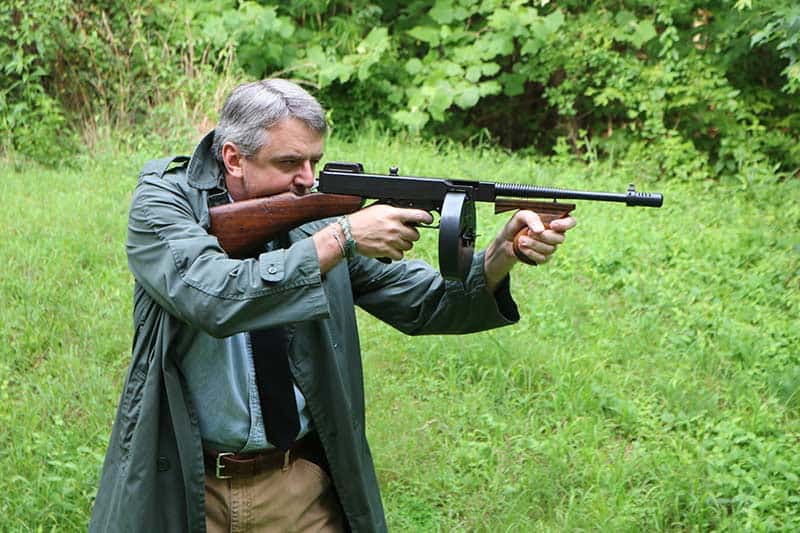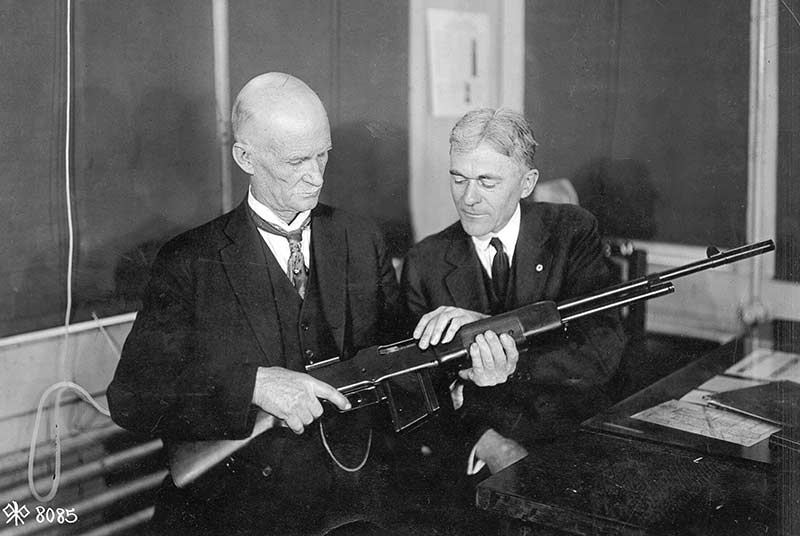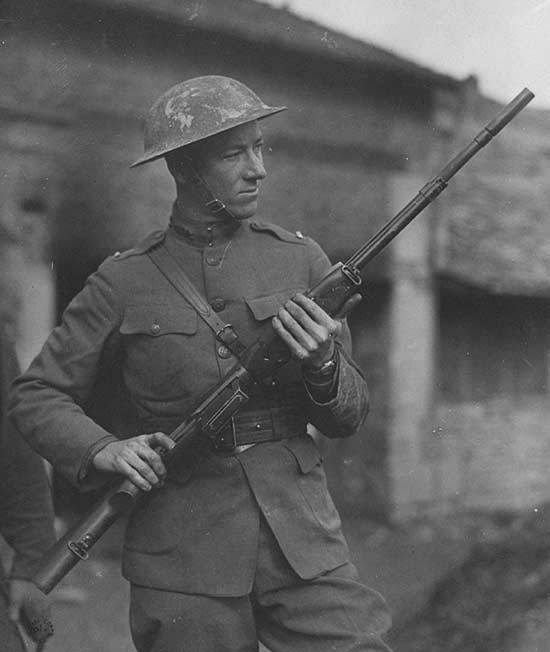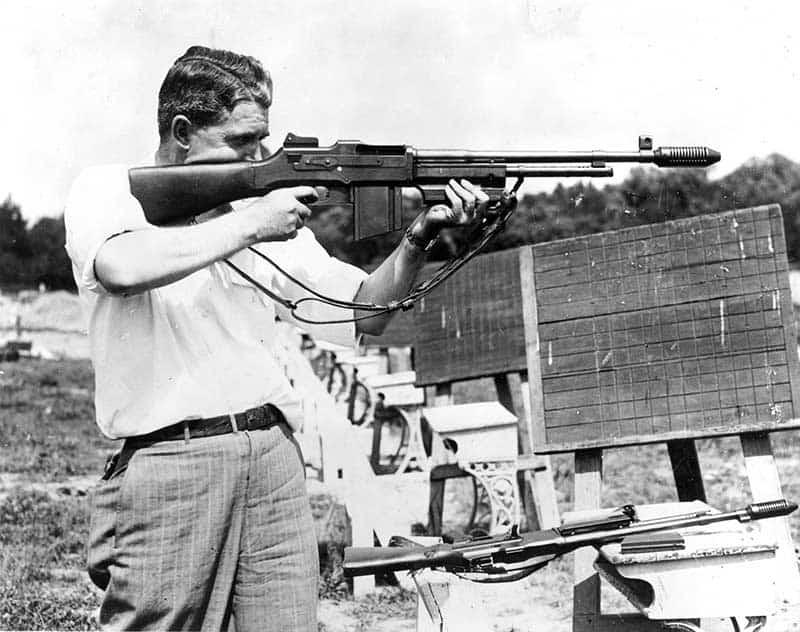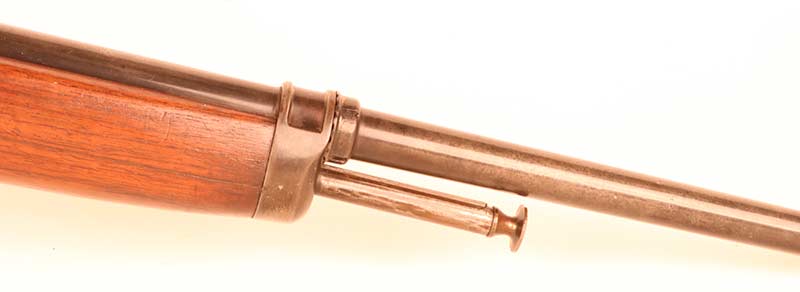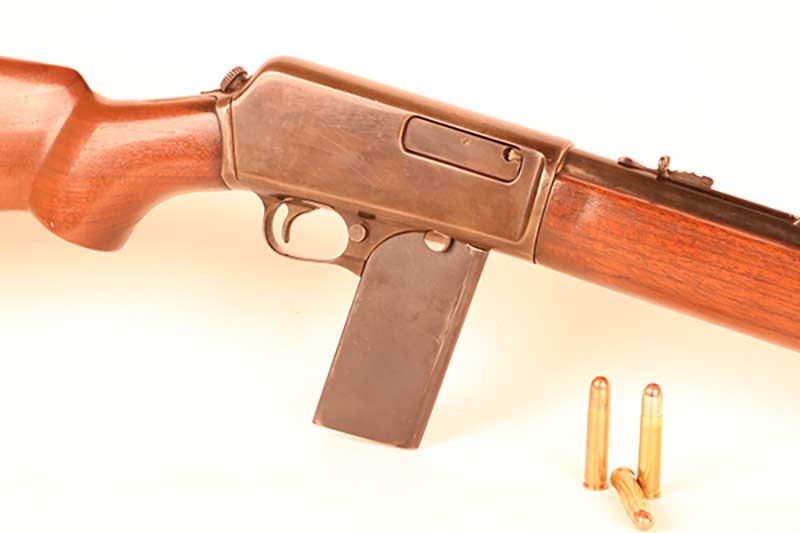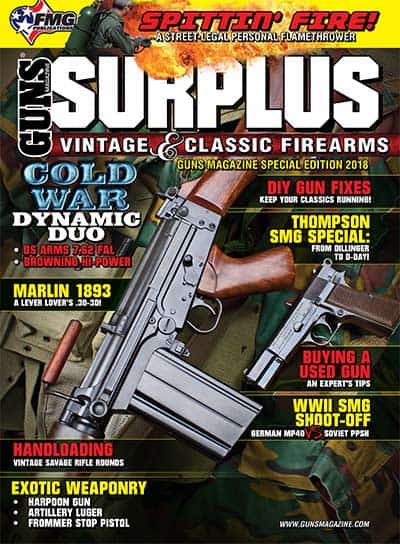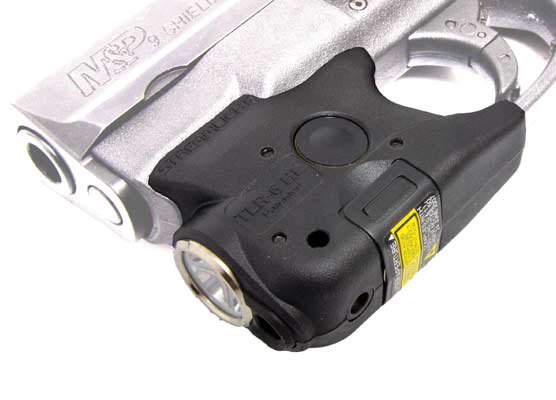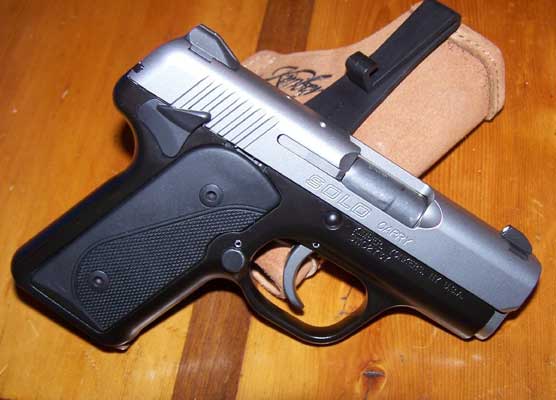Gangster Guns!
Motor-Bandit Hardware Of The Great Depression
Set Legendary Standards For Bad-Guy Firepower
In the early third of the 20th century we Americans really did embrace small government. The nation nearly starved during the Great Depression, and citizens mired in the dreary exigencies of survival lusted after excitement. A fledgling media provided the excitement by publicizing the exploits of flamboyant, larger-than-life criminals.
There never really were that many of them. Even canonized by time, there are no more than perhaps a dozen names of proper gangster bandits with enough staying power to prevail. However, the likes of Dillinger, Barrow, Capone, Van Meter, Nelson and Floyd had an effect on American culture that far outpaced their actual exploits.
Then as now, politicians did what politicians do — they get re-elected by weaponizing a crisis. In the wake of the media-fueled scourge of the motorized bandit in the early 1930’s it meant dipping their toes into the untapped hysteria that was gun control. Their extra-constitutional modus operandi was actually quite elegant. It came in the form of the 1934 National Firearms Act.
The Past Is A Different Country
Prior to 1934 a typical American with a little cash could walk into their local hardware store and leave with dynamite or a machine gun without so much as flashing a driver’s license. Of course, in the 1930’s few typical Americans had driver’s licenses and even fewer had cash. The pickings were fairly slim, but if you were a well-heeled gun nerd, the world truly was your oyster.
In 1934 politicians still read the Constitution on rare occasion and rightfully believed they lacked the power to outright ban things. As a result they determined to simply tax certain objectionable guns out of existence. They levied a tax of $200 on the transfer of every machine gun, sound suppressor, hand grenade or large-bore cannon sold in the US. As $200 in 1934 was the equivalent of $3,400 in today’s dollars, this tariff stopped commerce in these items cold — just as was intended.
A little known fact is the original verbiage of the National Firearms Act included handguns as NFA-regulated weapons alongside machine guns and sound suppressors. It was only after a little last minute wrangling that pistols were stricken from the bill. The morphological restrictions concerning short-barreled rifles and shotguns were intended solely to keep folks from getting around the expected pistol provisions. When handguns were removed from the NFA the short-barreled rifle and shotgun stipulations were superfluous, but no one thought to strike the language before the bill was signed. So let’s take a look at some “infamous” models.
The Thompson SMG
A treatise of this sort is not complete without proper mention of the Thompson submachine gun. The Tommy gun defined the gangster era. Its iconic lines, particularly with a drum mag installed, became a familiar image. As late as the Korean War every submachine gun to include the German MP40 and Russian PPSh was typically referred to colloquially as a “Tommy Gun.”
Gen. Thompson’s creation was the perfect tool for the job. It was just small enough to be concealed yet carried phenomenal onboard firepower. The gun’s capacity to create instant fire superiority in the face of long odds made it the go-to gun for Dillinger, et al. Still, the number of Thompson guns actually used by criminals was pitifully small.
Cops bought them to maintain firepower parity with their opponents, and this fact was the source of several of the gangster Tommy guns. Dillinger took one from a hapless patrolman responding to one of his bank robberies. He subsequently used it on other criminal misadventures. Dillinger and his gang also robbed four police stations in pursuit of arms. Clyde Barrow purportedly stole three Browning Automatic Rifles from an Illinois National Guard Armory on April 19, 1933. Despite the lack of federal regulation, criminals rarely obtained their weapons via conventional means. Sound familiar?
The Browning Automatic Rifle
John Moses Browning was the most prolific gun designer in history, holding 128 patents at the time of his death. The great man keeled over of heart failure while toiling at his workbench in the FN factory in Liege, Belgium, in 1926. The machine rifle that bore his name hit the streets just in time for the end of the Great War.
Legend has it that John’s son, Val, was the first US serviceman to fire the BAR in anger in WWI. However, despite limited use in the War to End All Wars, the gun didn’t see really widespread military issue until 1938. In a day when the bolt-action rifle reigned supreme, the BAR offered 20 rounds of sizzling .30-06 power on tap in a gun both portable and controllable. These same attributes made the BAR a simply splendid criminal’s weapon.
The Colt Monitor BAR was actually optimized for the mission. Sporting a stubby barrel, Cutts compensator and abbreviated pistol grip, the Monitor was compact enough to run out of a moving automobile. However, these guns were insanely expensive at $300 apiece. Colt only built 125 of them, 90 of which went to the FBI. Another 11 went to the US Treasury department, leaving pitifully few to be acquired by criminal elements. However, Baby Face Nelson did indeed use a Colt Monitor in his final gunfight with the FBI in Barrington, Ill., on November 27, 1934.
The Winchester M1907
The Winchester Model 1907 was a blowback-operated semi-automatic rifle offered by Winchester between 1907 and 1957. This relatively simple long gun fired the .351 SL — a cartridge with an odd rebated rim featuring roughly the same muzzle energy as the Com-Bloc 7.62×39. The M1907 bore a striking resemblance to the M1 Carbine that eventually helped the Allies win World War II, though the M1907 was markedly heavier and more powerful. The rifle fed from 5-, 10- or 15-round single-stack magazines.
The M1907 was a staple among gangsters. Several of these guns were tied to the Dillinger gang, and Dillinger’s pal Homer Van Meter used one to kill patrolman Howard Wagner during the gang’s final bank heist in South Bend, Ind. Handy, powerful, and available, the M1907 provided a bit more reach than did the Thompson.
A Texas gunsmith named Hyman Lebman adapted the M1907 into a better close combat tool by mounting up a Cutts compensator and installing a vertical foregrip from a Thompson. There were rumored to have been six or seven such conversions. A Lebman-converted M1907 hangs on the wall in the FBI headquarters in Washington, D.C., as part of the Bureau’s collection of Dillinger guns. The M1907 was also the first tactical rifle ordered by the FBI to combat the gangsters.
The Remington Model 11
The humpbacked Remington Model 11 was itself a licensed copy of the Belgian-made Browning Auto-5. The Auto-5 was the world’s first successful autoloading shotgun, and the design of which Browning was said to have been the most proud.
The Model 11 was a recoil-operated design. This meant the barrel cycled backwards along with the bolt to effect the loading cycle. Many subsequent autoloading firearms — including the M2 HB .50-caliber MG — used this mechanism. The principal benefit for criminal applications rested in the fact the barrel could be shortened precipitously without affecting reliability.
Bonnie Parker and Clyde Barrow used the M11. One of the most famous photographs to survive of the duo depicts Bonnie in a simulated holdup of Clyde with a sawed-off version of the gun. These shotguns typically had a chopped barrel as well as a buttstock cut to roughly half its original length. The mechanics of the recoil system in the buttstock precluded the stock’s actual removal.
Winchester 1897
The pump-action Winchester 1897 shotgun was itself an evolutionary development of the Browning-designed 1893. (It seems Mr. Browning had a part in designing most every firearm of significance in the late 19th and early 20th centuries.) The 1897 was used by all branches of the US military in both World Wars and a specialized military version was known as the Trench Gun.
The gun held 5 rounds in the magazine with one in the chamber and sported an exposed hammer. Winchester built more than a million copies between 1897 and 1957, so they were widely distributed in the United States. The bolt slides backward out of the receiver when the slide is racked (I’ve had my copy bite my hand on numerous occasions).
Bonnie and Clyde were known to have used an 1897 Winchester that was ultimately auctioned in 2012 for $80,000. Military Trench Guns sported a ventilated heat shield and bayonet lug. Gangster guns were typically obtained through civilian channels and so lacked these features
Handguns
The various gangsters of the 1920’s and ’30’s used a wide variety of handguns. The Colt 1911 represented the state of the art at the time and was popular in both .45 ACP and .38 Super. Full auto versions converted by Hyman Lebman were particularly coveted. John Dillinger abandoned a converted 1911 in .38 Super when he made a hasty departure from the Lincoln Court Apartments in St. Paul, Minn., in March 1934. Baby Face Nelson used a similar weapon to engage federal agents during the Little Bohemia raid in April of the same year.
The .38 Special revolver was in common use among both criminals and lawmen. Colt as well as Smith & Wesson churned them out by the thousands. These were small enough to conceal yet still retained enough power to do the job reliably.
There is anecdotal evidence of the use of .25-caliber pocket guns as well as the Savage Model 1907, Colt 1903 Hammerless and Browning 1910 by criminal elements of the day. The 1903 Hammerless in particular was a streamlined and effective pocket gun. There was even a German Luger or two. Criminals of this era used whatever they could afford — or steal. And at the height of their success they could afford the best technology had to offer.
Hard Endings
There is a natural allure regarding the tales of these gangsters of old. I honestly had a ball researching their exploits for this article. However, if you look past the baseless perception of an exciting carefree life on the run you get to meatier stuff. By the end, Dillinger and Van Meter in particular were utterly miserable. Hounded at every turn and alienated from everyone about whom they cared, they wanted nothing more than to be free of the thug’s life. They both ultimately died badly for their crimes.
The tools these desperados wielded are timeless connections to the chaos they sowed. Those few with provenance that remain are protected behind steel and glass. They still offer a fascinating insight into this most remarkable time in American history.

